Mom’s Choice Awards is excited to announce another post in our interview series where we chat with the inventors, designers, publishers, and others behind some of our favorite family-friendly products.
How’s it going, readers? Today we are coming at you with another interview in our ongoing interview series. Heidi Stock has won multiple Mom’s Choice Awards for her Whistlefritz language-learning series, and today we’re here to share CARNAVAL with you! CARNAVAL is a collection of Spanish learning songs that will help your children of all ages to grasp the Spanish language in a fun and musical way. Keep reading to learn more about Heidi and her amazing educational products!
MCA: Hi Heidi! We are so glad to be speaking with you once again. Congratulations on another Mom’s Choice Award! Can you go ahead and tell our readers a little bit more about yourself, and how your background lead you to create Whistlefritz?
Heidi: My background is probably not what you’d guess. I was a transactional lawyer for many years, working on mergers, partnerships, and the financing of international power projects. I always wanted my own children to learn Spanish, but, as a non-native speaker, I didn’t want them to speak with my accent.When the kids were born, I couldn’t find high-quality videos and music that taught Spanish to children as young as mine. Most of the programs then either switched back and forth between English and Spanish, or were just what I’d call ‘video flashcards’.
‘Video flashcards’ are a word or two on a screen like ‘to drink,’ or ‘to eat’. This is not a natural way to learn a language. A 2-year-old English-speaking child should learn Spanish just as they learn English, by learning words in sentences and in context. Babies learn the ‘rhythm’ of language before they learn specific words. That’s why, when they start to babble, it sounds like their language, even if it’s not real words. If you have just a word on a screen, kids can’t hear how the language flows.
Also, the programs that existed were just boring! Just a shot of an object on a screen and a word. I wanted to create videos that were more like real-life interactive experiences. So, Whistlefritz videos have real-life teachers and kids, animation, lots of catchy music, fun skits, and games!
MCA: We are always in awe when parents create a solution to a problem they faced when they were raising their own children. Something that you’re obviously very passionate about is sharing with parents and educators what the benefits of being bilingual are. Can you tell me a little more about these benefits and the research behind them?
Heidi: Research shows that being bilingual improves certain brain functions and social skills, and that these things extend beyond simply speaking another language!
The benefits of learning a second language are myriad. There are obvious benefits – such as being able to communicate with more people and learn about other cultures – but there are less obvious benefits too. Research shows that bilinguals develop stronger cognitive and brain processes that enable them to function better in areas that are both related and unrelated to speaking another language.
Research also demonstrates that bilinguals have stronger skills in the broad category of executive functioning, which includes cognitive, social, and language-processing skills.
One component of executive functioning is flexible thinking; in other words, being able to change what you are doing based on changes in circumstances. Research indicates that bilingual children perform better on tests of flexible thinking. For example, in one study, babies learned that when they heard a sound, a puppet would appear on one side of a screen. Halfway through the study, the puppet started appearing on the other side of the screen. Only the babies raised in bilingual homes were able to adapt successfully to the change.
Interestingly, the bilingual advantage in flexible thinking seems to extend to children with autism spectrum disorder (ASD) as well. Children who are on the autism spectrum typically struggle adjusting to changes in their environments. That’s why recent research conducted with bilingual and monolingual children on the autism spectrum is particularly interesting. In one study, researchers at McGill University asked autistic children between the ages of 6 and 9 to perform tasks that required switching between activities. The study found that bilingual children with autism shifted between tasks more successfully than their monolingual counterparts.
Bilingual children are also better at understanding a speaker’s intended meaning. To communicate effectively, you need to know more than vocabulary; you also need to have the social and emotional skills that allow you to understand another person’s meaning. For example, the word “pop” in the sentence, “I like pop,” could mean “soda,” if the speaker is a Michigander, or “popsicle,” if the speaker is a New Yorker. The meaning depends on where the speaker is from. Reading social cues about meaning – such as where someone is from and how that influences what they might mean – is a necessary part of communication. It’s also something that bilinguals get a lot of practice doing.
In a study conducted by researchers at the University of Chicago, bilingual children and, significantly, children who were exposed to another language though they were not bilingual, were more successful than monolingual children at determining a speaker’s meaning. The study involved a communication test that paired one adult and one child in a game to move objects in a grid. The child could see all of the objects, but the adult could only see some. The child understood that the adult couldn’t see all the objects. For the critical test, the adult asked the child to move the “small” car. The child was able to see three cars – small, medium, and large – but the adult could only see the medium and large cars. To correctly understand the adult’s meaning, the child had to realize that the “small” car that the adult was referring to was the smallest car the adult could see, but not the smallest car the child could see. The adult’s “small” car was the child’s “medium” car. In other words, the child had to understand the adult’s perspective.
As one of the study’s authors, Dr. Katherine Kinzler, explains: “Children in multilingual environments routinely have the opportunity to track who speaks which language, who understands which content, and who can converse with whom. These early social-linguistic experiences could hone children’s skills at taking other people’s perspective and provide them tools for effective communications tools.”
MCA: Wow. That is quite compelling! It makes us wish we had started our own babies on Whistlefritz when they were first born. It’s never too late though, right? So, you’ve told us what some of the many benefits of early language learning are, but the question is: how early is too early?
Heidi: The answer is: it’s never too early!
For example, research also shows that the best time to start exposing children to a second language is at birth, and even before! In pregnancy, babies actually do learn the intonation and rhythm of the language or languages that the mother speaks. Amazingly, babies can distinguish their mother’s language from other languages within hours after birth. In other words, the process of learning a language starts early!
Another incredible thing about babies and language-learning is that at birth, babies can hear all human language sounds, but they do lose this ability over time. According to Dr. Naja Ferian Ramirez, a baby’s brain can hear all 800 sounds – 600 consonants and 200 vowels – that make up all the world’s languages combined. These distinct sounds, called phonemes, distinguish one language from another. At birth, babies can hear all 800 sounds. But gradually, babies lose the ability to hear the sounds that they are not exposed to. Being able to hear a language’s unique sounds is likely one of the reasons that children, unlike adults, can learn to speak a second language without an accent.
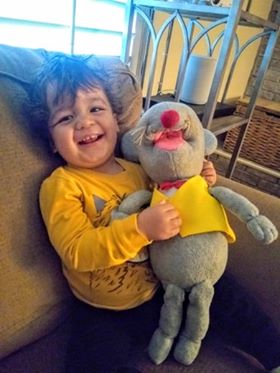 Also, simply being exposed to the sounds of a language – even if a child doesn’t speak it – provides advantages for learning the language later in life. In one study, Korean infants younger than 6 months were exposed to a language before they had started talking. The infants were adopted, and didn’t hear the language again until they were adults. Despite the passage of time, the infants still had advantages re-learning the language as adults. Why? The study’s authors concluded that the infants’ early exposure to Korean let them develop phonological awareness of the language. As the study’s lead author, Dr. Jiyoun Choi, put it: “Language learning can be retained subconsciously, even if conscious memories of the language do not exist.”
Also, simply being exposed to the sounds of a language – even if a child doesn’t speak it – provides advantages for learning the language later in life. In one study, Korean infants younger than 6 months were exposed to a language before they had started talking. The infants were adopted, and didn’t hear the language again until they were adults. Despite the passage of time, the infants still had advantages re-learning the language as adults. Why? The study’s authors concluded that the infants’ early exposure to Korean let them develop phonological awareness of the language. As the study’s lead author, Dr. Jiyoun Choi, put it: “Language learning can be retained subconsciously, even if conscious memories of the language do not exist.”
MCA: How neat is that! It’s amazing what babies are capable of, even in their mothers’ tummies. We love that you’ve created so many products, including CARNAVAL, that teach children other languages while still having fun and being engaged. What has the response been like to CARNAVAL?
Heidi: The feedback from families is incredible. It’s what keeps us going. Honestly, many of the emails fans have sent make me cry. One mother wrote that her son was adopted from Central America close to his second birthday and would not speak in any language for a year. She said he started to speak after watching the Whistlefritz videos. Parents have written in about how much their children love Fritzi, the animated star mouse who appears in scenes with the live teacher. One grandmother made her very lucky grandson this Fritzi doll because he loved him so much.
The most satisfying part of my job is talking with families about how Whistlefritz has made a difference in their lives and how it started their children — and often parents and grandparents! — on a language-learning journey.
MCA: That must give you so much satisfaction! What beautiful stories. we are so grateful for you and everything you’re doing for children- thank you for being a part of the Mom’s Choice family for so many years! We look forward to seeing more from you and Whistlefritz in the future.
To learn more about Heidi and Whistlefritz, visit her website here! You can also check out CARNAVAL and other Whistlefritz products in our MCA Webstore.


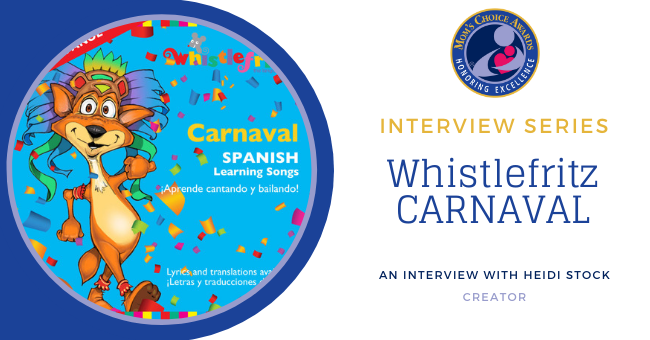
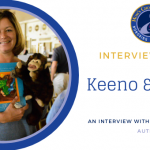
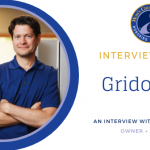
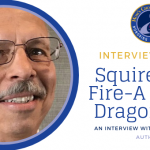
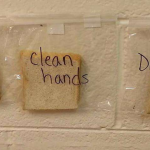
One Comment on “Interview With Heidi Stock, Creator of Whistlefritz CARNAVAL”
I would love this!